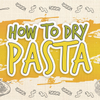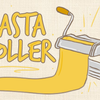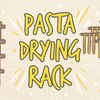Why Does Pasta Foam? A Quick Guide

We have all been there; one moment, your pot of pasta is cooking as expected, next the pot is boiling over with excessive foam. The main reason why pasta produces so much foam while cooking is due to the presence of starch in the pasta, which absorbs water and expands when exposed to hot temperatures and eventually busts in a process known as gelatinization. This article seeks to uncover everything there is to know about cooking pasta, how it produces foam, and how to control the amount.
What Is Pasta Foam?
The whitish foam that’s often produced by boiling pasta is a result of the starch absorbing water and expanding. Pasta, after all, contains substantial amounts of starch from the wheat flour and eggs. The superheated molecules of starch become stretchy and pliable resulting in white foam that’s full of bubbles that take longer to burst. Further reading material: foodbeast.com.
Why Does Pasta Foam?
Pasta foams due to the accumulation of superheated starch molecules that are found in the pasta. The white foam forms bubbles that trap hot vapor, preventing it from escaping the pot. The boiling pot of water and pasta then becomes superheated if left unstirred, or the frothy layer is not skimmed off the top in time. When this happens, the top layer of bubbles will often expand outwards and pop up, spilling boiling pasta water all over around the pot.
Ways To Prevent The Bubbling
Don’t Leave The Lid On The Pasta Pot - Leaving the lid on a pot of boiling pasta water results in increased vapor pressure within the pot. This, in turn, increases the amount of vapor trapped in large bubbles. This can be prevented by simply leaving the pot uncovered, allowing the hot steam to escape freely and reduces the accumulation of foam within the pot of boiling pasta water.
Use A Bigger Pot - Increasing the surface area available for the boiling water vapor to escape does reduce the overall amount of foam accumulated. While it will take longer to heat up the more considerable amount of water required to cook pasta on a larger pot, it does a much cleaner job without any spillovers.
Use The Right Amount Of Water - 100 g of dry pasta will require around 500ml of water to boil evenly. It’s recommended to start off with boiling water as pasta soaks much more quickly and adheres evenly after cooking without getting mushy. As a result, the boiling pasta water will not form too much foam, and the bubbles will escape freely without any spillages.
Low Heat Cooking - Boiling pasta under low heat seating will reduce the overall boiling rate and accumulation of bubbles on the surface. While it might take much longer to cook the pasta under a low heat setting, it will certainly prevent any spillovers. It’s important to note that while some guides advocate for adding butter to avoid the formation of foam, this leaves the pasta tasteless as the oily coating on the surface prevents the sauce from adhering with the pasta.
Science Behind The Bubbles
The starch molecules in pasta get superheated in a moist environment as the pasta cooks resulting in the absorption of more water by the starch molecules. This continues until the starch molecules burst sending little molecules of starch into the boiling pasta water. This results in the formation of more white foam, which traps the hot vapor in large bubbles.
It’s this upper layer of foam and bubbles that causes problems as they are too stretchy and pliable to burst easily. Instead, they trap the vapor within the pot preventing proper ventilation of the steam. This, in turn, superheats the pot increasing the production of steam, and the bubbles occasionally burst out, sending boiling pasta water flying out of the pot if it’s covered with a lid. Further reading material: gizmodo.co.uk.
How To Make The Perfect Pasta
1. Always Start With Boiling Water
Pasta should only be dropped into the pot of water when it’s boiling so as to maintain its texture and shape. The heat from the boiling water scalds the outer layer of the pasta, preventing it from breaking apart.
2. Stir Continually
String the boiling pasta continually will prevent the white foam from accumulating too much on the upper surface and forming large bubbles.
3. Take The Lid Off
As soon as the pasta water starts boiling again after adding pasta, you should uncover the pit and leave to simmer uncovered, allowing the steam to escape freely. This prevents the accumulation of superheated vapor within the pot.
4. Reuse The Pasta Water
The salted pasta water that is left behind after boiling the pasta can be used to make the sauce to accompany the pasta. This allows the flavors to match more evenly, giving you great tasting pasta.
5. Don’t Rinse Or Oil
Never rinse cooked pasta as it will no longer adhere well with the sauce, and it will have lost its flavor as well. Adding oil to boiling pasta water will only prevent the pasta from adhering with the sauce later on, so avoid it. Further reading material: buzzfeed.com.
Common Questions
When To Add Pasta To Water?
Pasta needs the intense heat of boiling water to set the outer layer of the pasta so that it can hold its texture.
Does Pasta Water Have To Boil?
Yes, pasta water must boil before the dry pasta can be added due to the fact that pasta quickly breaks down in tepid water and becomes mushy as the starch dissolves.
Why Does My Pasta Water Look Soapy?
The starch in pasta starts to break down when heated, resulting in a layer of soapy white foam.
How Do You Keep Pasta From Foaming?
Stirring the boiling pasta water frequently will prevent the accumulation of bubbles and foam.
Should You Rinse Pasta?
No, cooked pasta should not be rinsed as this will wash away the starch lining on the surface, which helps it adhere perfectly to the sauce.
How Do You Keep Pasta From Sticking Together When Cold?
If you plan on reheating your pasta later on, simply toss it with a few drops of olive oil to cover the surfaces and prevent them from sticking together.
Does pasta Get hard When Undercooked?
Undercooked pasta has a hard texture that’s not easy to chew on as it requires heat to break down the texture.
Why Does Water Stop Boiling When You Add Pasta?
The pasta temporarily lowers the heat within the pot, and it requires additional heat to bring the mixture of water and pasta back to the boiling level.
Why Does Boiling Pasta Break?
Boiling pasta for too long will gradually break down the starch content that holds the pasta into shape, and it becomes limp and gummy.






